Traditionally, the full-back position has been regarded as one of the least glamorous on a football pitch. The cliché old saying about full-backs was that they were “players not strong enough to play at centre-back and not skillful enough to play as a winger.” Jamie Carragher once joked that no young footballer dreams of becoming the next Gary Neville.
As football evolved through the years, we have witnessed major tweaks and changes in every position across the pitch. The emergence of sweeper keepers, ball-playing centre-backs, inverted wingers and false nines are key examples. But one can argue that the full-back position has stood out the most in terms of transformation.
Historically, full-backs’ primary duties were to tuck in to support their centre-backs and maintain a narrow solid defensive shape. They also prevent the opposition wingers from getting crosses into the box. Full-backs are tasked with opening up spaces and passing options by hugging the touchline to stretch and widen the pitch. Full-backs were more famous for their defensive duties with players like Zanetti and Maldini going down in history as two of the best ever to play the position.
The role has transformed to what we now call a modern full-back. Despite teams playing with attacking full-backs dating back to the early 1950s, most notably the Brazil national teams from Nílton and Djalma Santos in the 1958 World Cup to Cafu and Roberto Carlos in 2002, their importance has significantly increased in the past decade. They are now considered a vital part of a team’s attacking tactics and have become the most versatile and dynamic players on the pitch.
The immense importance of full-backs can be highlighted in recent years in the transfer market. The ten most expensive full-backs in history have all been signed since 2016.
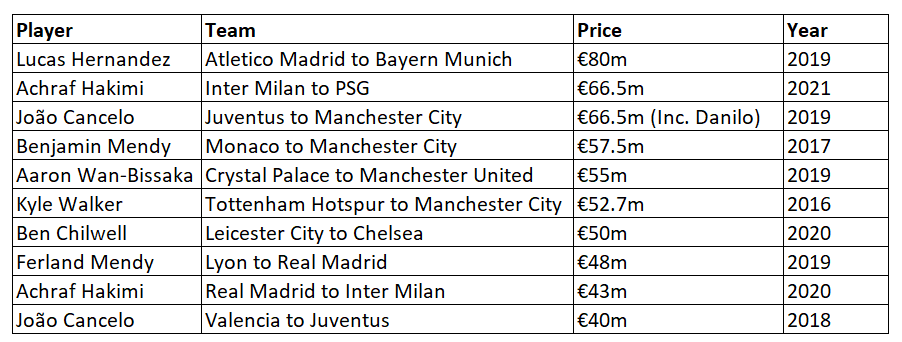
The modern full-back can be grouped into three types commonly used in different tactical set-ups.
Overlapping full-back
A modern full-back is a machine constantly bombarding up and down the flank from box to box, engaging in attacks and racing back to provide defensive cover every time the ball is lost. The overlapping full-back makes overlapping and underlapping runs ahead of his wide teammate/winger. When receiving the ball in attacking areas, the full-back must provide crosses and through balls to the forward players. The overlapping full-back must also run on to through balls and dribble the ball forward over large distances. To top it off, he must have the ability to beat his opponent in 1v1 situations. Modern full-backs have to be extremely fit and have a high work ethic to be able to chase back and protect the areas around the centre-backs. They also must be fast and quick on their feet to be able to cope with offensive and defensive transitions. Full-backs who do not possess these traits in abundance often get exposed defensively.
Examples of modern overlapping full-backs
Andrew Robertson and Trent Alexander-Arnold, Liverpool
A key figure in Liverpool’s success under Jürgen Klopp, Alexander-Arnold has developed into one of the best attacking full-backs in world football. Trent’s core strengths are his exceptional passing range and vision, crossing from wide areas and set-pieces as well as his shot creating actions. In 2020, Alexander-Arnold became the first full-back to register double-digit assist figures in two consecutive Premier League campaigns. He has now amassed 12 assists in 27 league appearances in 2021/22 with seven games remaining. Throughout this season, Trent has also been used as an inverted-full back, tucking into a more deep-lying playmaker role.
Boundless energy, great spacial awareness and excellent crossing ability, Robertson is the left half of the most deadly full-back duo in the Premier League. He is viewed as a more complete player than Trent, especially in the defensive department. Robertson leads the Liverpool team in distance covered per game, breathtakingly bombing back and forth to occupy the space vacated by Sadio Mané. He is also dubbed as one of the most aggressive pressers in his position.
In the image below, we can see Robertson and Trent linking up in the game vs Manchester City in April. The Liverpool front three are all in the box and it is the full-backs providing the width. Robertson curls it in the space for Trent who cuts it back for Jota to score.
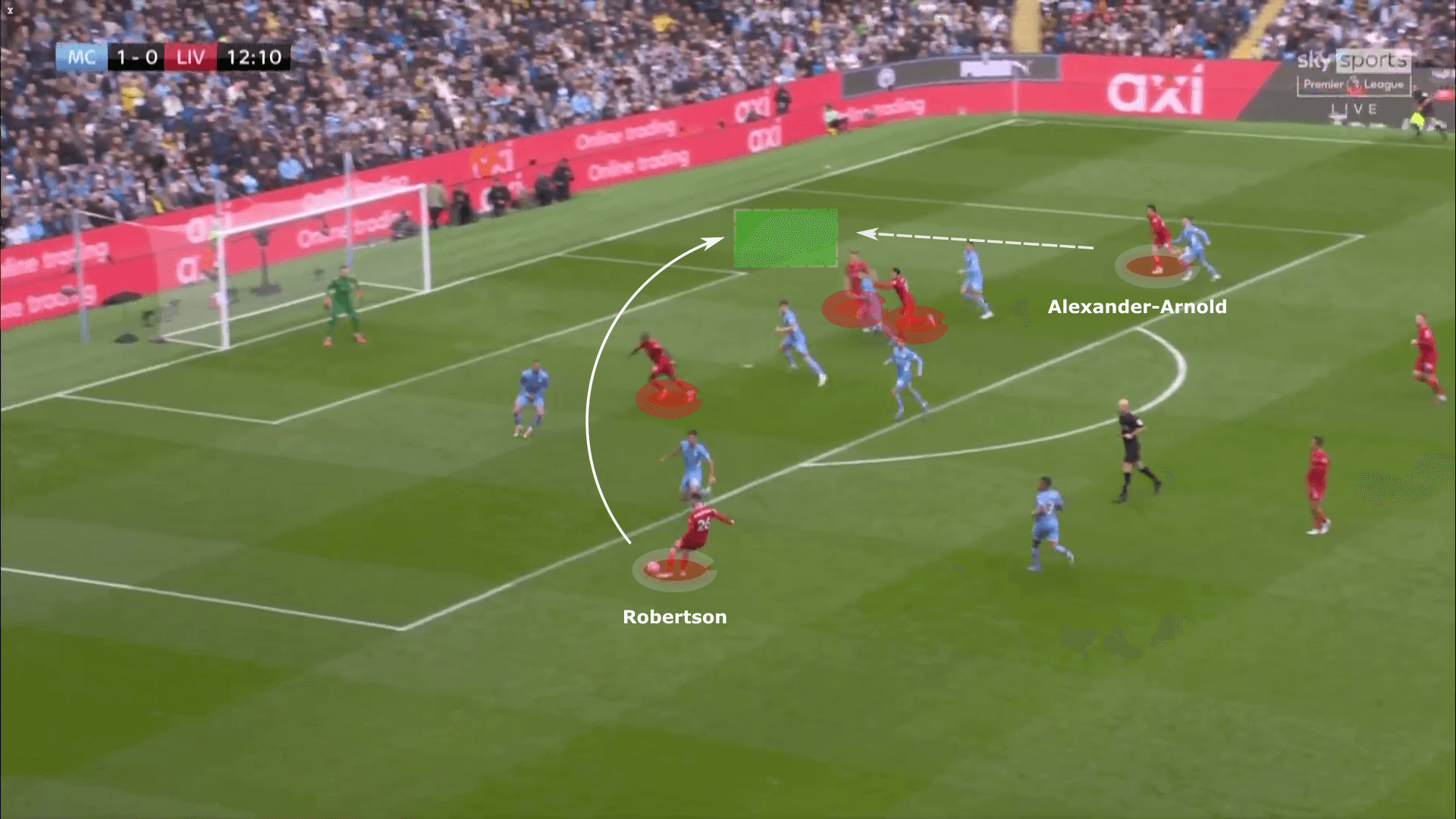
Dani Alves, Barcelona
Alves is undoubtedly one of the greatest full-backs of all time and the most decorated player in the history of the game. A masterful dribbler of the ball and all-round magician, he was key to Barcelona’s success from 2008 to 2016. Alves produced a staggering 83 goal contributions during his first four seasons at the club. In that period, Alves was the focal point of Barca’s attack from the right hand side. Whether it was Messi or Pedro playing there, they would both often cut inside with Alves breaking on the overlap.
In the below images, Messi drifts towards midfield to participate in the build-up, vacating the right wing. Neymar receives the ball at the half-way line and spots Alves’ run behind Roma’s back line. He finds him with a delicious through ball as Alves controls the ball and lays it on a plate for Suarez to score.
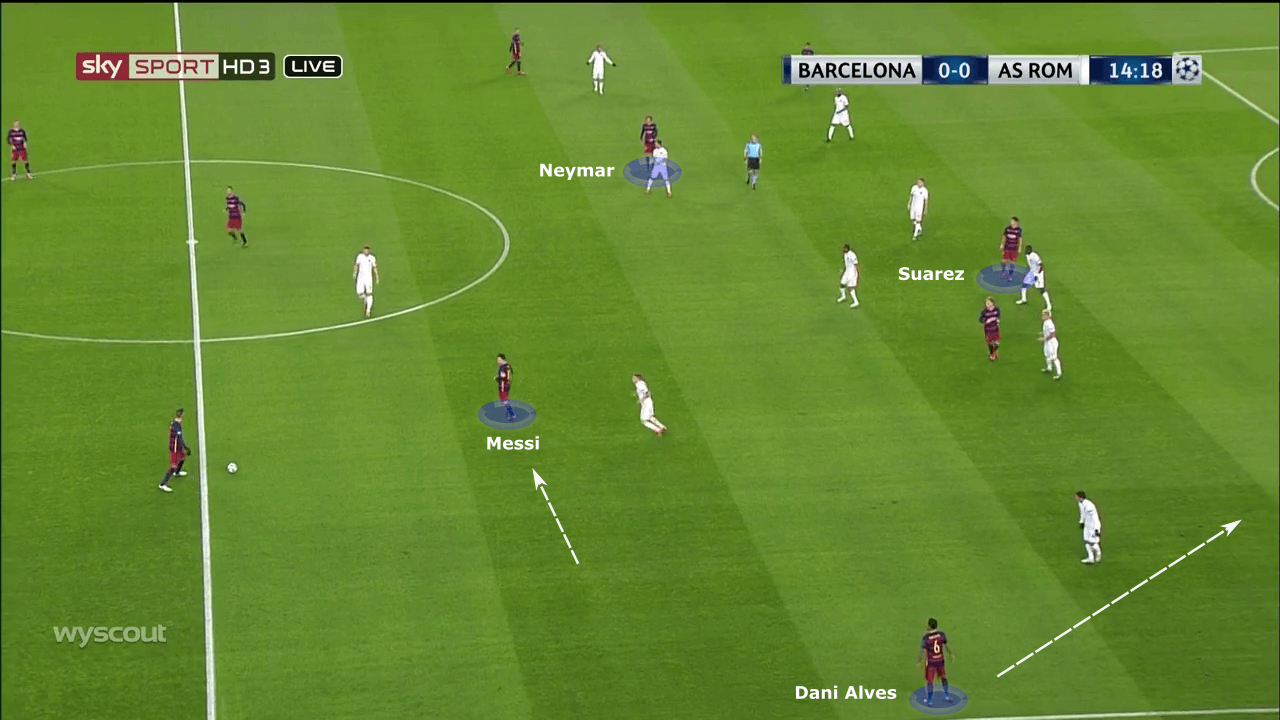
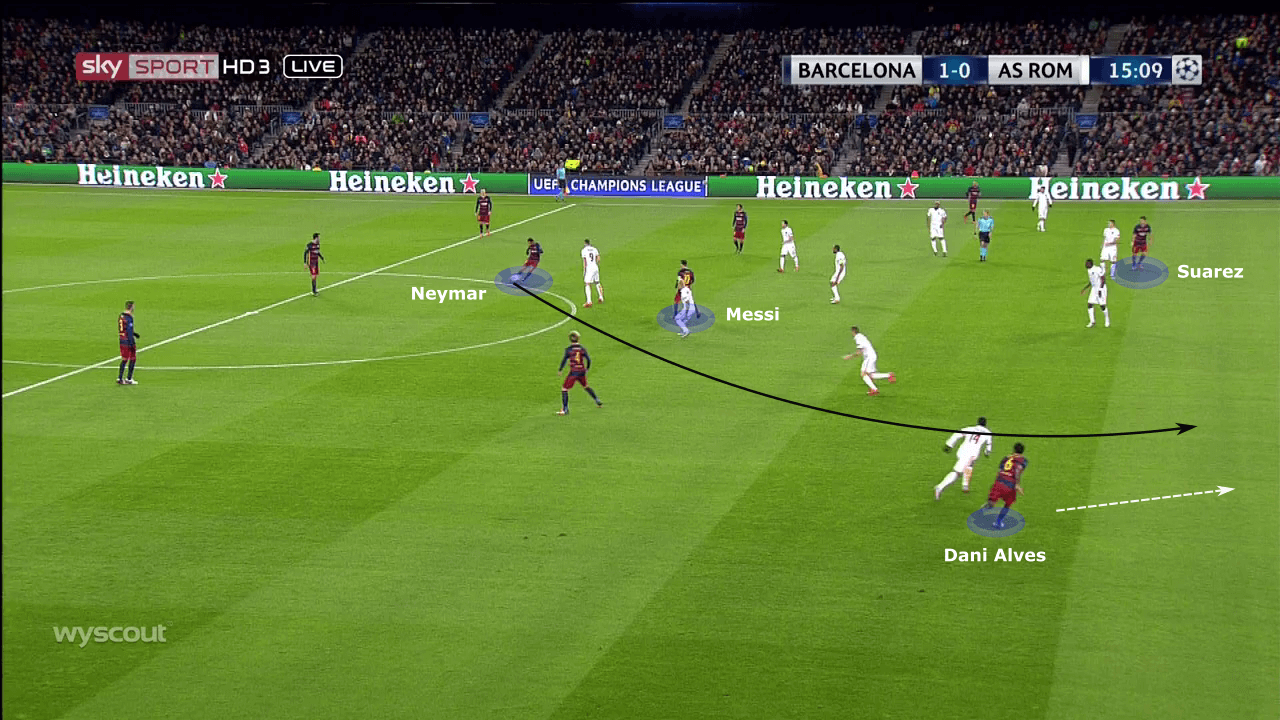
Marcelo, Real Madrid
An ever-present at left-back in Real Madrid’s side from 2007 till 2018, Marcelo is viewed as one of the best attacking full-backs of his generation. His Brazilian flair, touch, trickery and ball control coupled with his speed, agility and dribbling skills meant he was one of the main attacking forces in star-studded Madrid teams. In particular, he was integral to the side historically winning three UEFA Champions League trophies in a row and four times in five years. In that period under Zinedine Zidane, Real Madrid played in a 4-4-2 diamond system. Marcelo and Carvajal provided the width to supply crosses to the lethal duo of Karim Benzema and Cristiano Ronaldo.
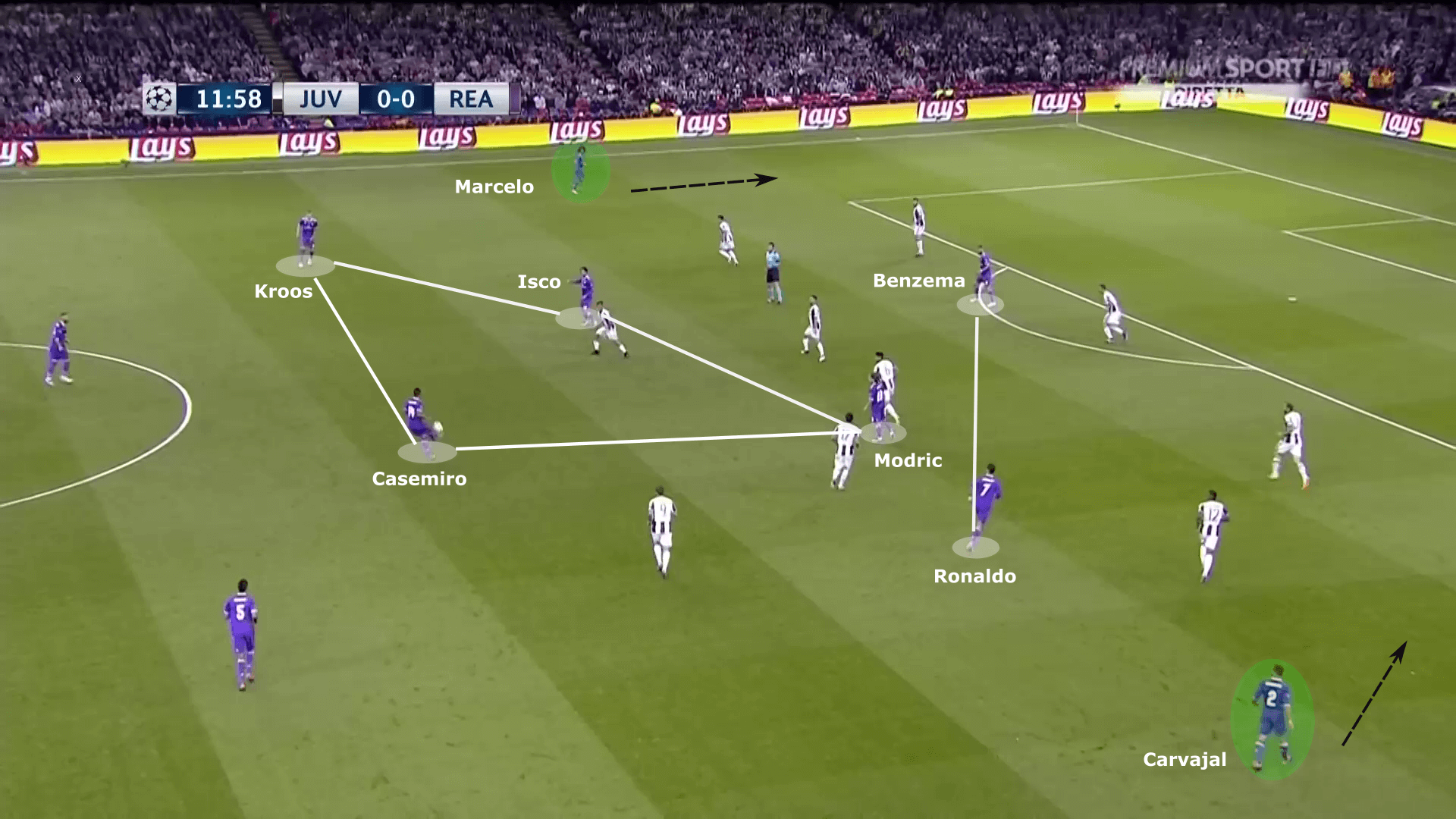
Having been accustomed to Marcelo for over a decade, Real Madrid fans must come to terms that not all full-backs can produce those types of stats and performances. Below is Ferland Mendy’s key stats per 90 minutes in the 2021/22 season compared to Barcelona’s Jordi Alba.
We can see the stark difference in crosses, key passes and progressive distance with the ball. Mendy is deemed to be a more defensive minded full-back and that can be seen in the tackling %.
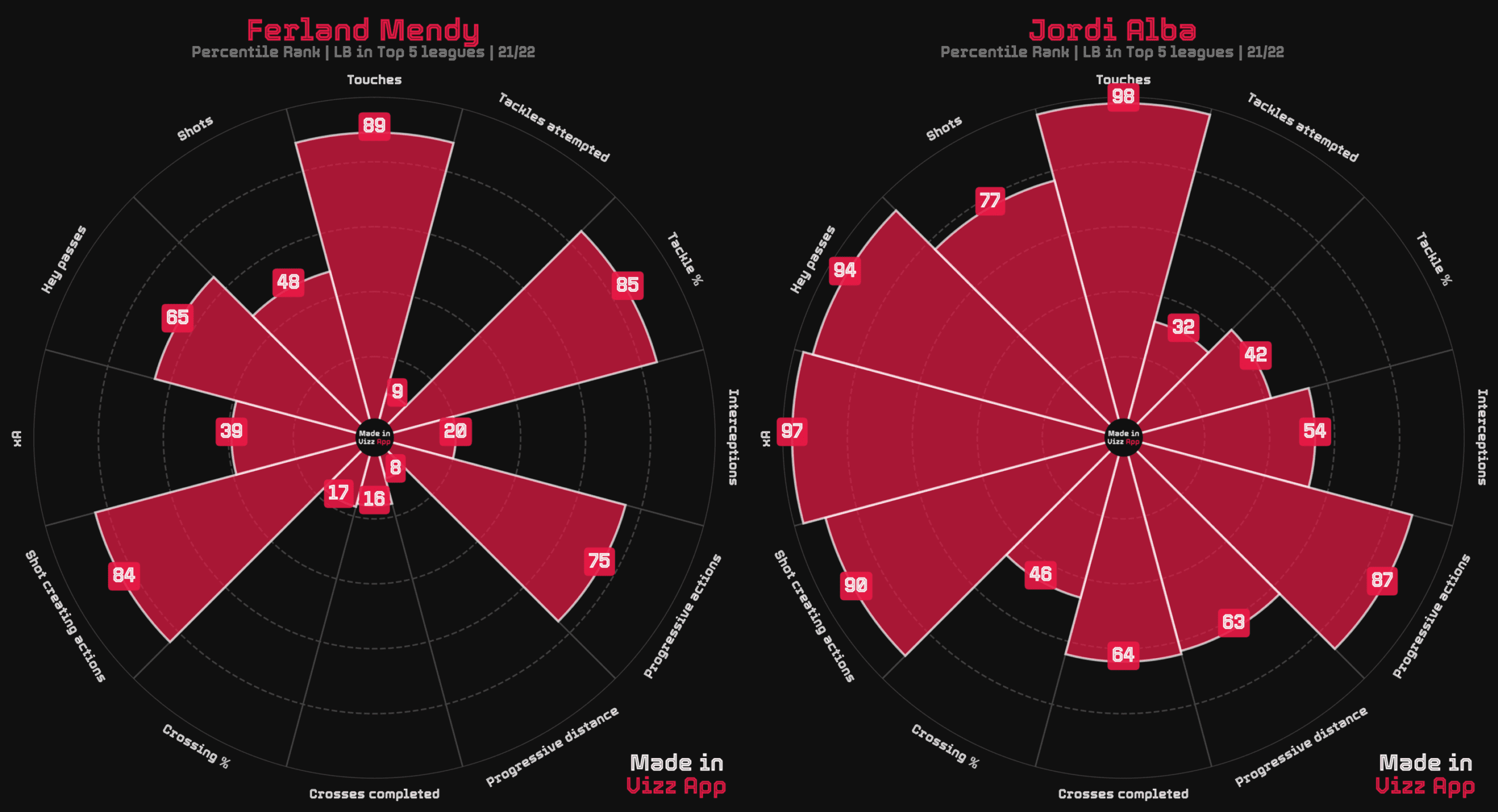
Inverted full-back
An inverted full-back is a full-back who essentially becomes a central midfielder during the team’s build-up play. This has two main advantages: it enables the team to create numerical superiority in midfield and block counter attacks in defensive transitions with the full-backs providing cover. Offensively, it frees up the other midfielders to operate in the half-spaces and between the lines and helps the team dictate the tempo. This tactic also drags opposition wide players inside to mark the inverted full-backs, leaving the attacking wingers 1v1 with their opponents. This style of play leads to the central areas becoming heavily congested, thus only players who are comfortable in tight spaces and possess the quality to play on the ball succeed in this role.
Examples of modern inverted full-backs
David Alaba and Phillip Lahm, Bayern Munich
Pep Guardiola has been one of the key figures in revolutionizing football in the past decade. At Bayern, Guardiola inherited Alaba and Lahm who were viewed as traditional full-backs at the time. Pep quickly realized, with dynamic wingers Arjen Robben and Frank Ribery preferring to play wide on the flanks, that it would be smart to utilize Alaba and Lahm as inverted full-backs. Both had the qualities to play in midfield and dictate proceedings. As shown in the below image, Alaba and Lahm step into midfield in a Champions League match against Manchester United, creating a 4v3 overload.
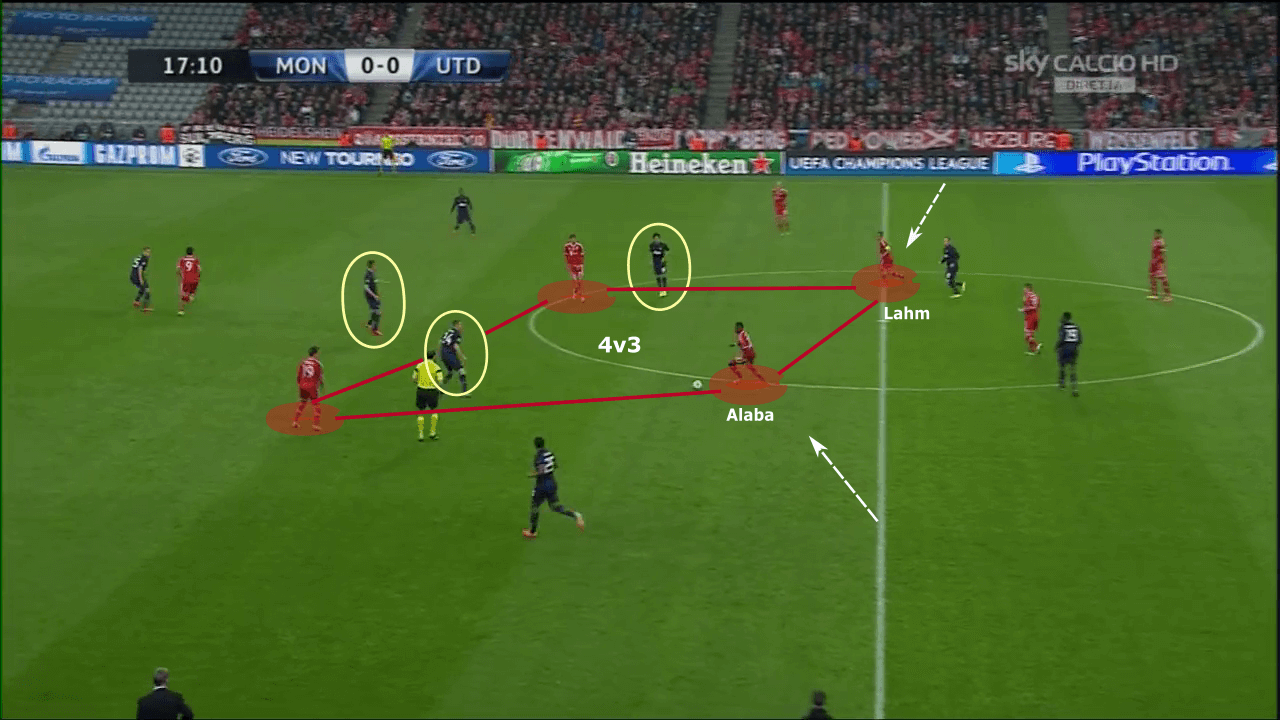
Kyle Walker and João Cancelo, Manchester City
Since Walker moved to Manchester City from Tottenham, he has played more centrally during City’s build-up phase of play. This is evident from the two heatmaps below, comparing his last season under Mauricio Pochettino at Spurs to his time at City.
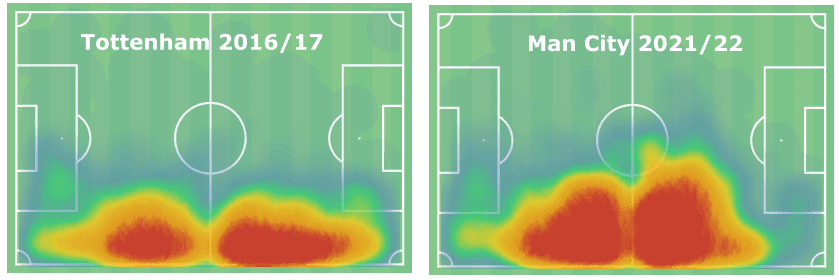
Guardiola has also used Cancelo in a similar fashion, although he is given more license to attack than Walker and very often makes under-lapping runs. The positions of Walker and Cancelo centrally is essential to the way City play as it allows their main creators De Bruyne and Silva to have freedom in advanced areas and create chances. They also provide cover for potential counter attacks which is extremely important in the way City set up with 10 players camped in the opposition half.
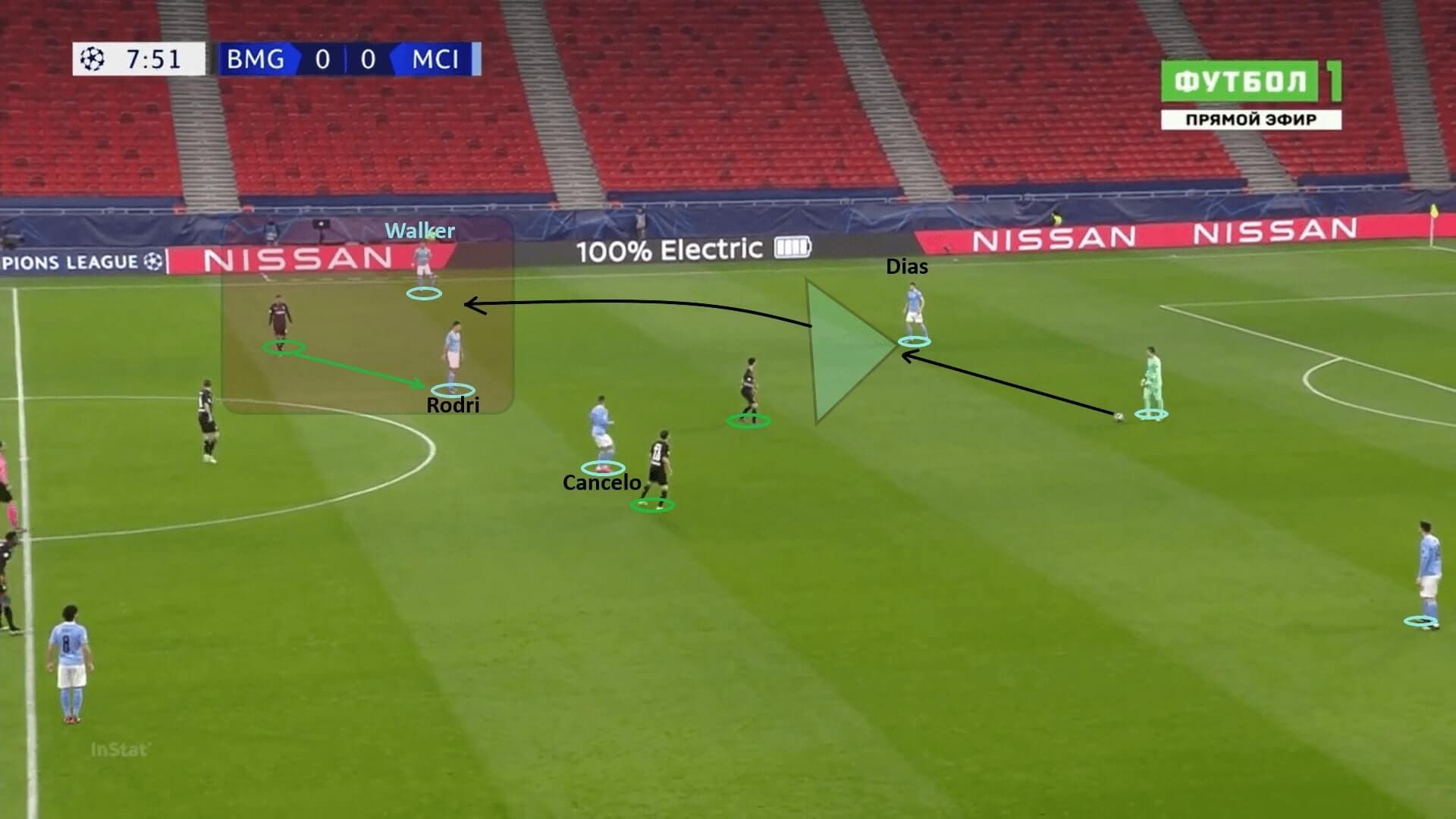
Wing-back
Wing-backs are essentially used in a back three system. They are basically a mix between a full-back and winger, very attack minded with reduced defensive duties. While full-backs can be encouraged to get forward and support the attack, wing-backs are responsible to dictate the attacking width of their team. Antonio Conte is the world’s most renowned manager in using the three at the back system, enjoying success wherever he went. This formation is quickly gaining popularity among Europe’s top five leagues. In the 2020/21 season, ten teams in Serie A, ten in the Bundesliga, seven in Ligue 1, five in La Liga and five in the Premier League have built their projects with 3-5-2 or its variants as the predominant system.
Examples of modern wing-backs
Marcos Alonso and Victor Moses, Chelsea
The perfect example of the impact of wing-backs were Chelsea’s dynamic duo of Marcos Alonso and Victor Moses in the 16/17 season. The duo were crucial to Chelsea’s emphatic title win in the Premier League. Alonso’s main qualities are his crossing and free-kick abilities as well as arriving late in the box to get on the end of crosses. Moses was more explosive bombing up and down the right wing to support attacks and help out on defense. Originally a winger, Moses possesses the skills to beat opponents 1v1.
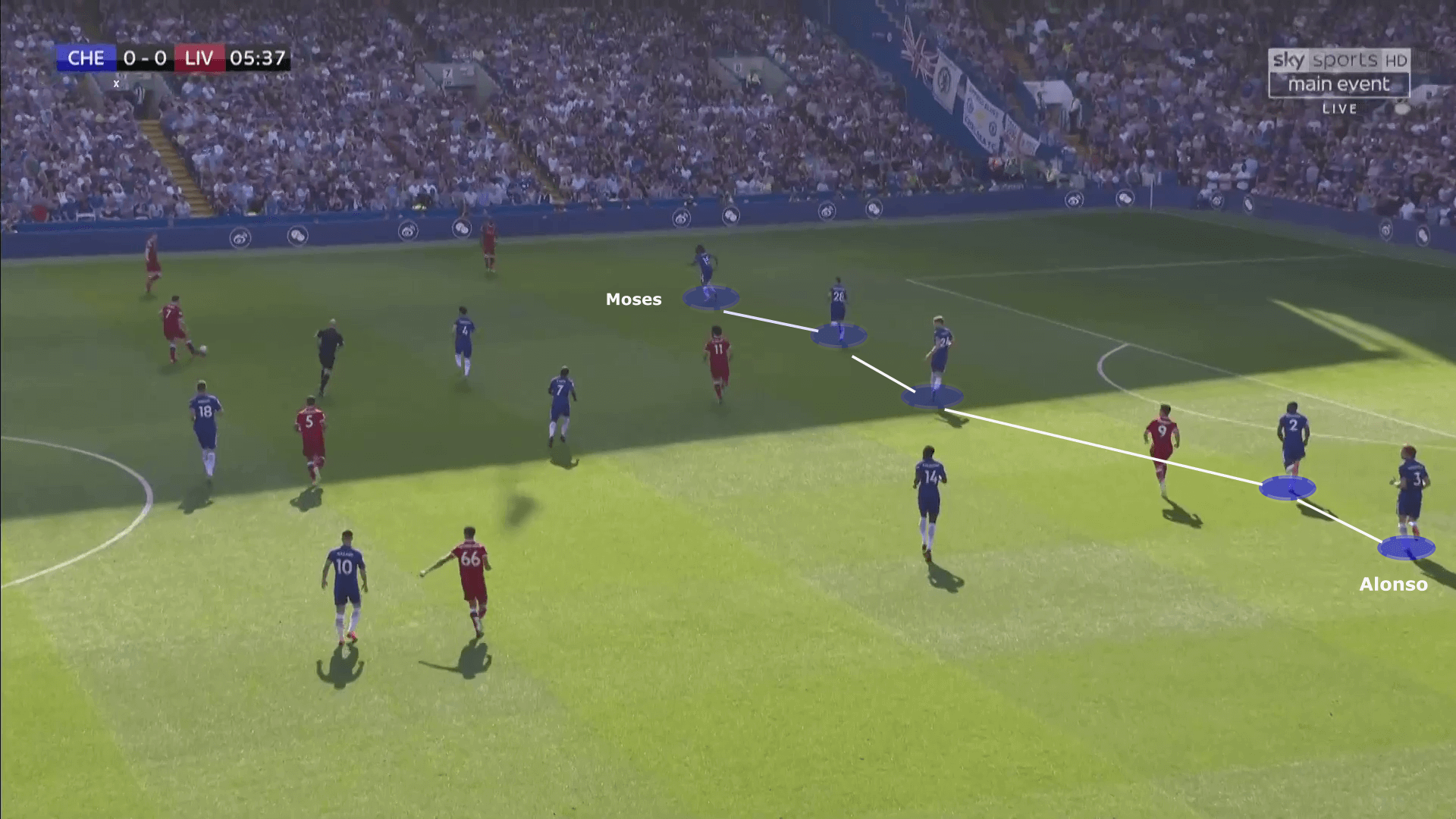
Below, we can see Pedro, Hazard and Diego Costa set-up in a narrow front three with Alonso and Moses providing the width in a Chelsea attack.
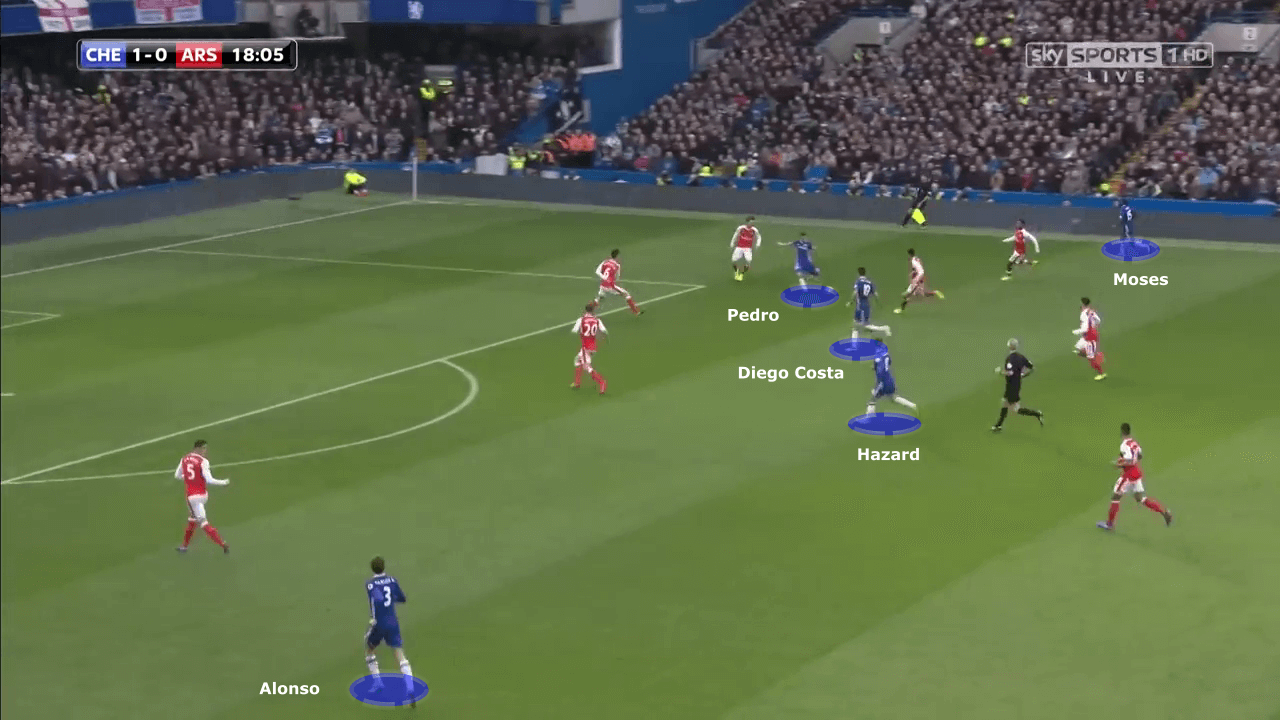
Joshua Kimmich and Robin Gosens, Germany
In Euro 2020, Germany played in a 3-4-3 formation with Kimmich and Gosens as the wing-backs. The latter was more familiar with the role as he is a natural wing-back, playing the position during his Atalanta career and currently at Inter Milan. Kimmich started his career as a right-back before moving to become one of the world’s best holding midfielders. However, head coach Joachim Löw used him as a right wing-back during the Euros and Kimmich adapted seamlessly to the role.
Here, Germany’s 3-4-3 system is on display. Kimmich and Gosens provide the width with Havertz, Müller and Gnabry tucking in more centrally.
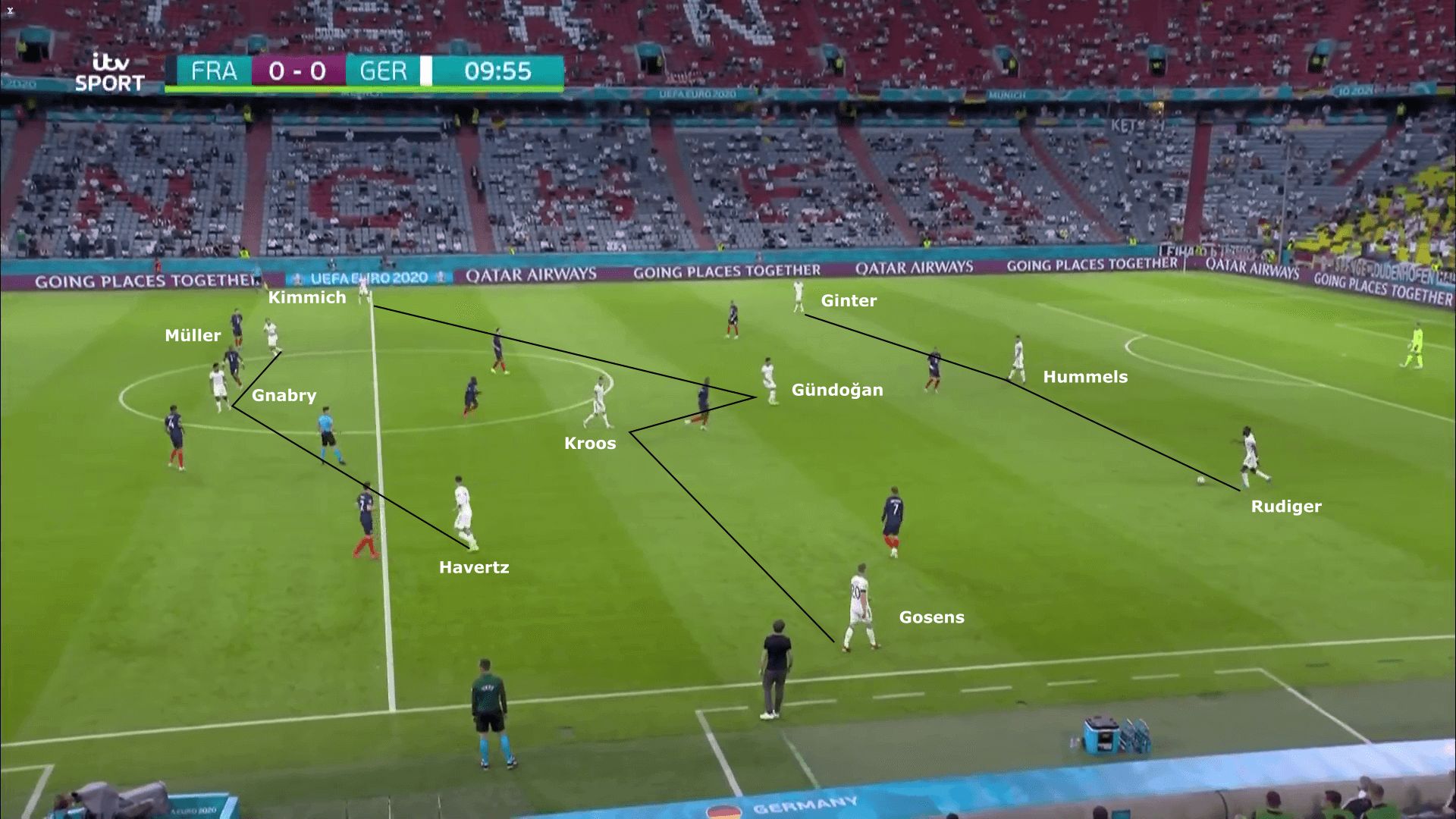
In the group stage game vs Portugal, Gosens was Germany’s main attacking outlet as he scored a goal and supplied two assists. His goal was in fact assisted by Kimmich from the far side from a bending cross into the box.
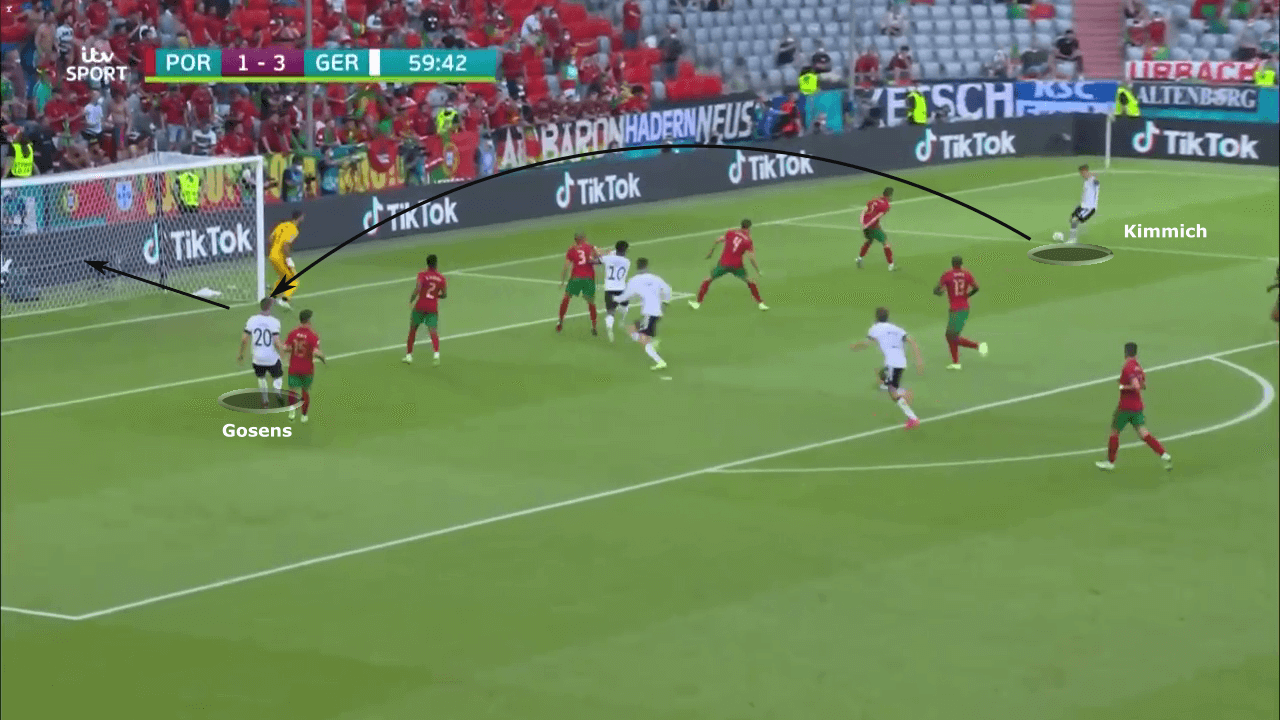
Conclusion
To wrap up, below are comparisons between modern full-backs and what one would call the more traditional full-backs for the 2021/22 season. Alexander-Arnold and Robertson vs Pavard and Wan-Bissaka.
Trent and Robertson are extremely involved in the attacking aspect, Pavard is somewhere in between and Wan-Bissaka’s map highlights his generally defensive nature.
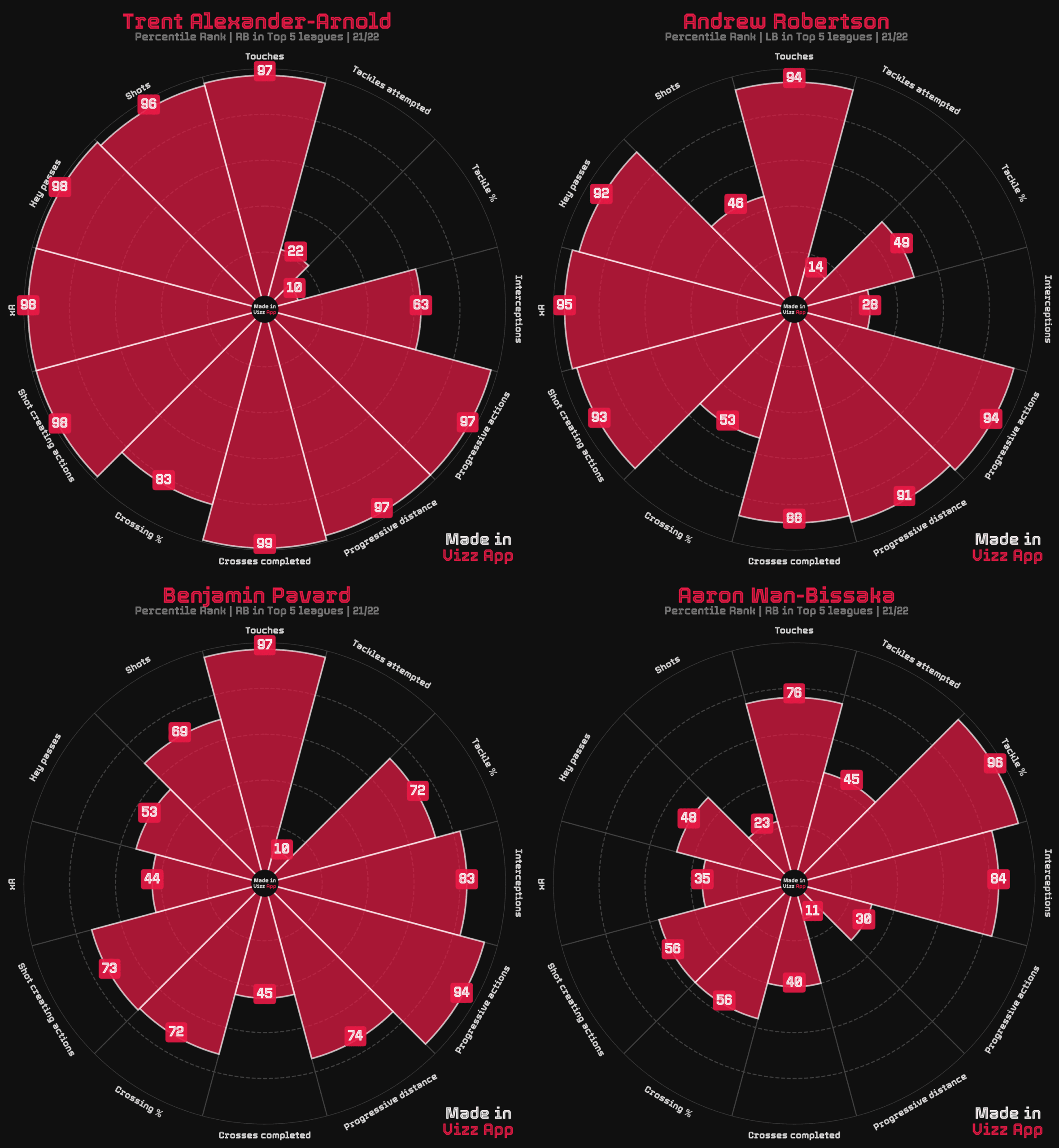
Like most things in life, football is constantly changing and evolving. The game we watch and love now is not the same one as forty, thirty or even ten years ago. Tactics, formations, styles and positions on the pitch are never fixed, new ideas will always emerge. With it comes all the thrill, excitement and unpredictability. In the end, that is what makes football the greatest sport in the world.

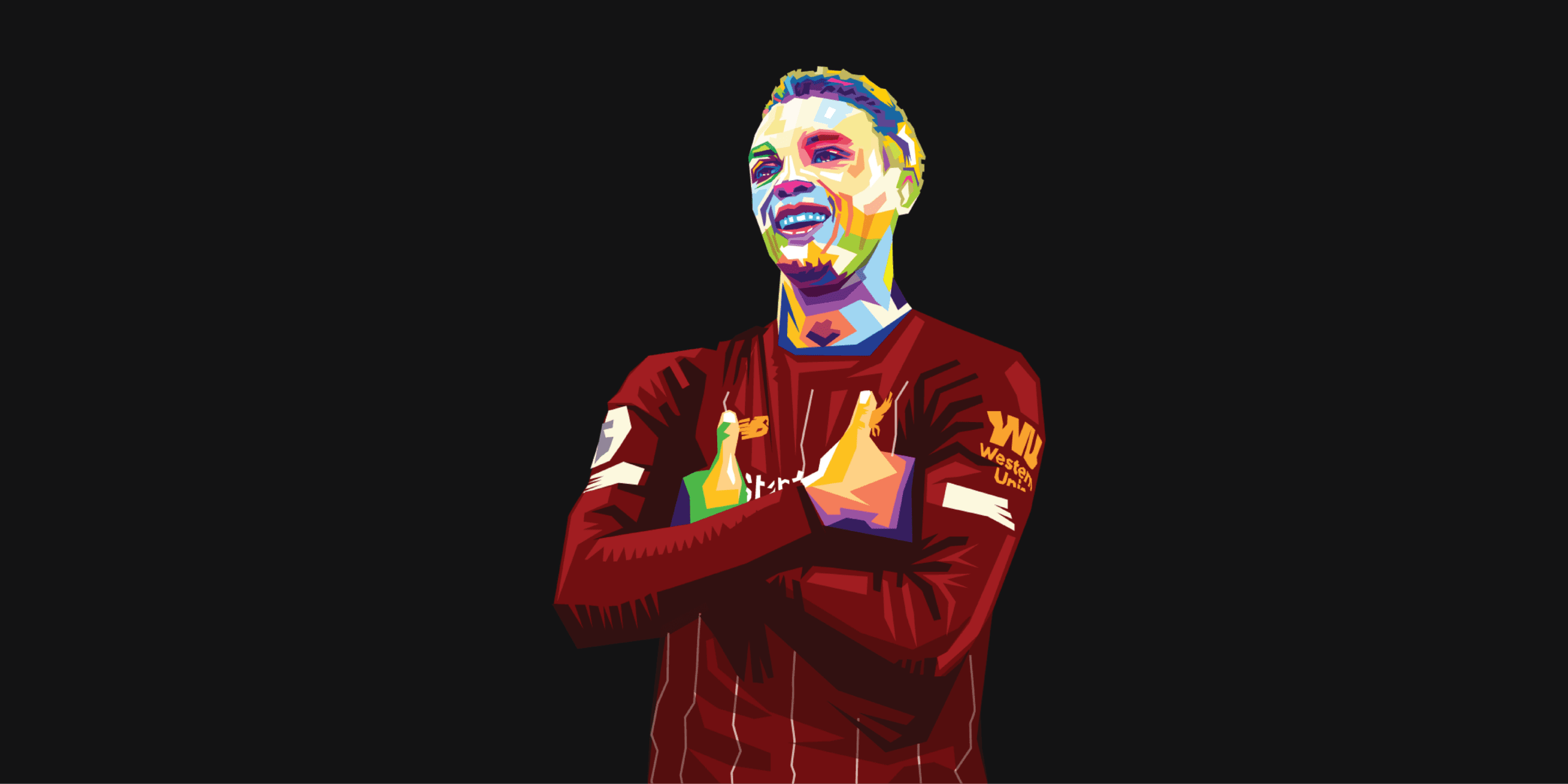



Comments